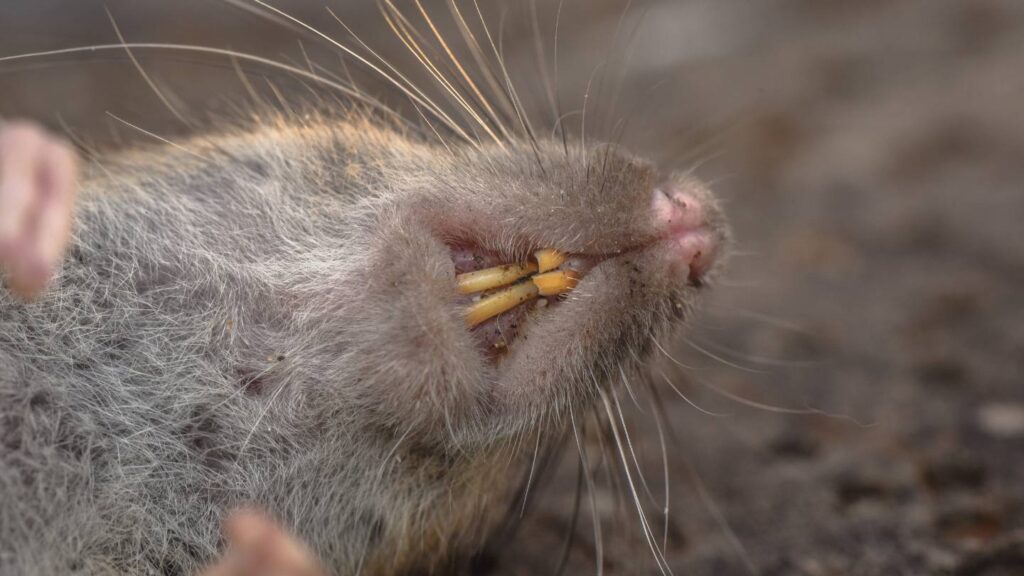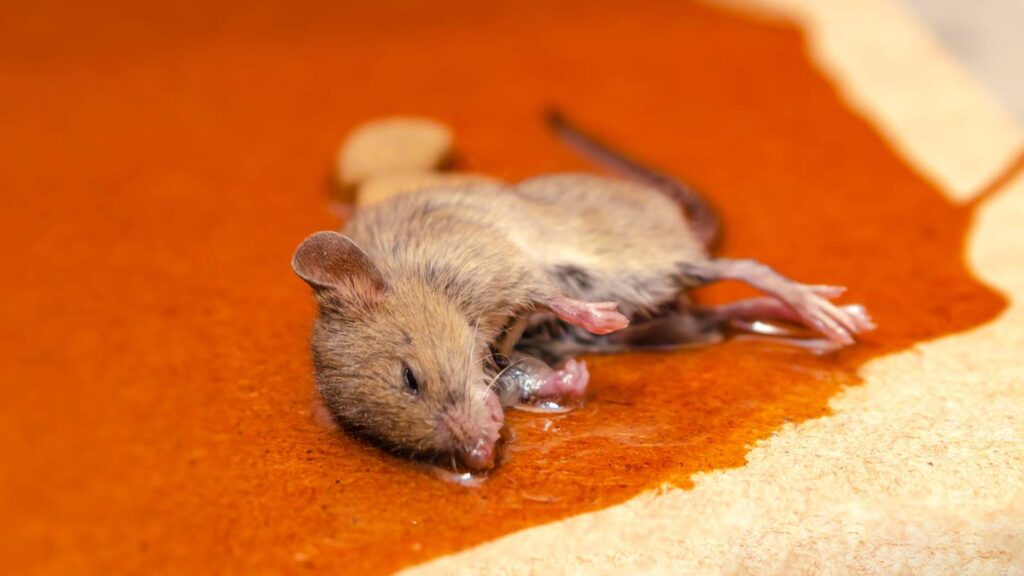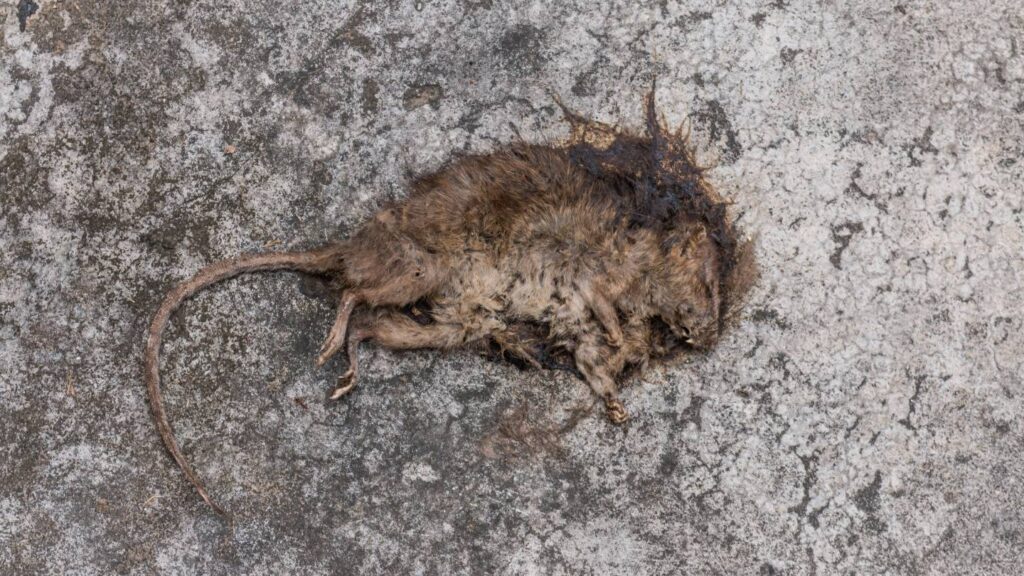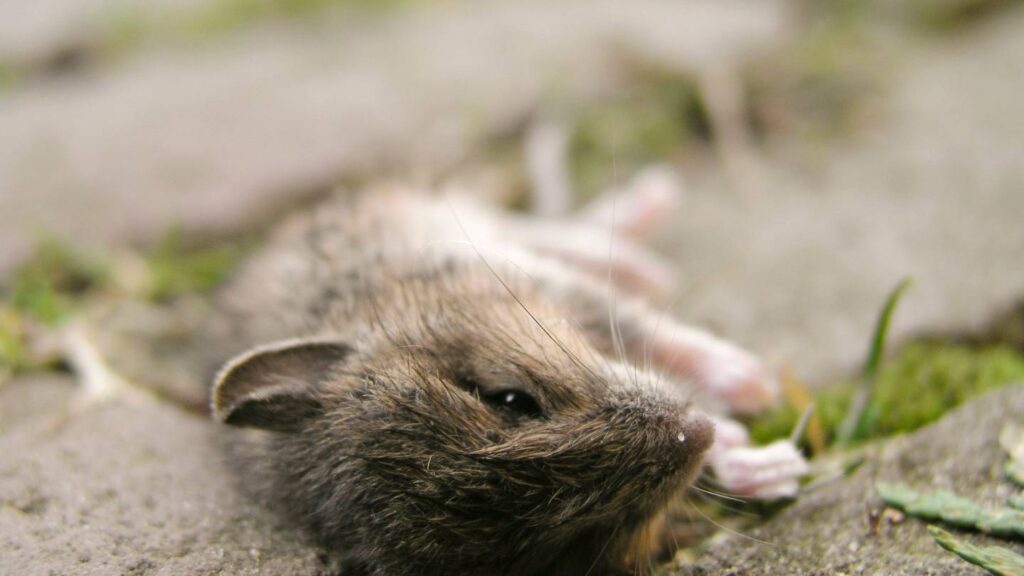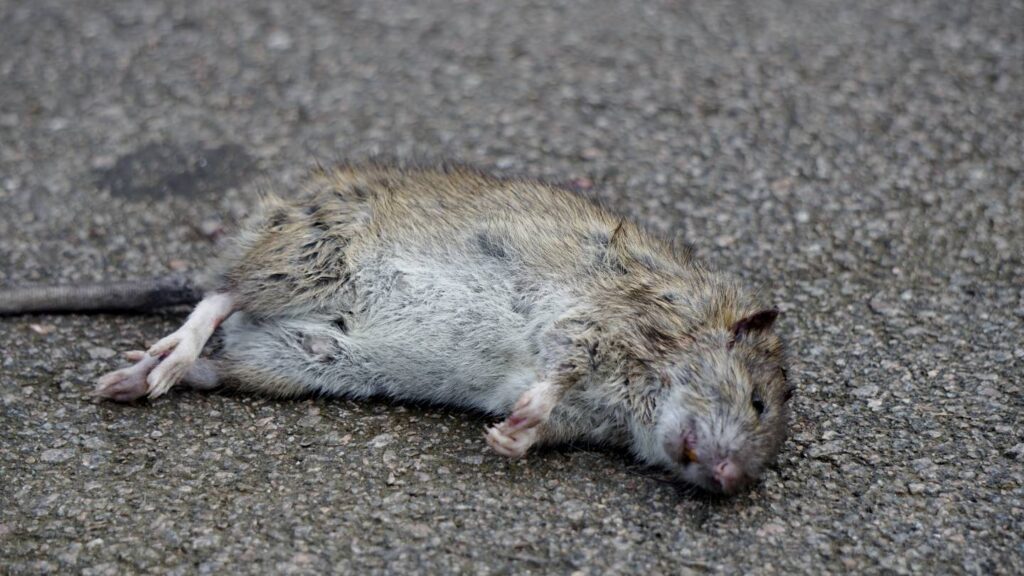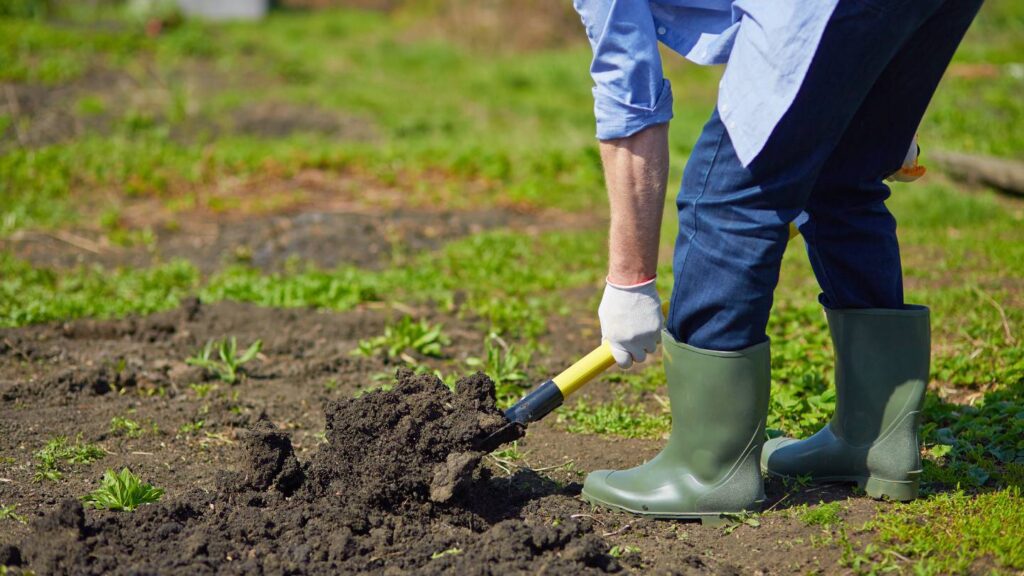After reading this, You can identify a dead animal in your home. No matter how bad it gets, there are ways to deal with it if you know what to expect. Let me calm you down first. However, before you begin, you will need a few things, including patience. Everything you need to identify and dispose of a dead animal in your home is enumerated here.
After you've cleaned the area well, give it an hour or two to work its magic by laying down some rags. The stench of a dead animal isn't generally that awful at first, but it will only worsen with time, so you should take action if you can. Use gloves or a stick covered in paper towels to pick up the animal if you can reach it before it becomes too terrible.
Why Find A Dead Animal In Your House
A lot of things can go wrong in your home and cause an animal to die. It became stuck and couldn't get out; other possible reasons include building damage or a lack of food or water. Locating and sealing up any entry points they may have used to access your insulation or wiring is paramount.
Use gloves or a stick covered in paper towels to pick up the animal if you can reach it before it becomes too terrible. If the corpse is stuck in a wall or floor and you can't get to it straight away, such as when an animal dies in a storm, this article will help you find it.
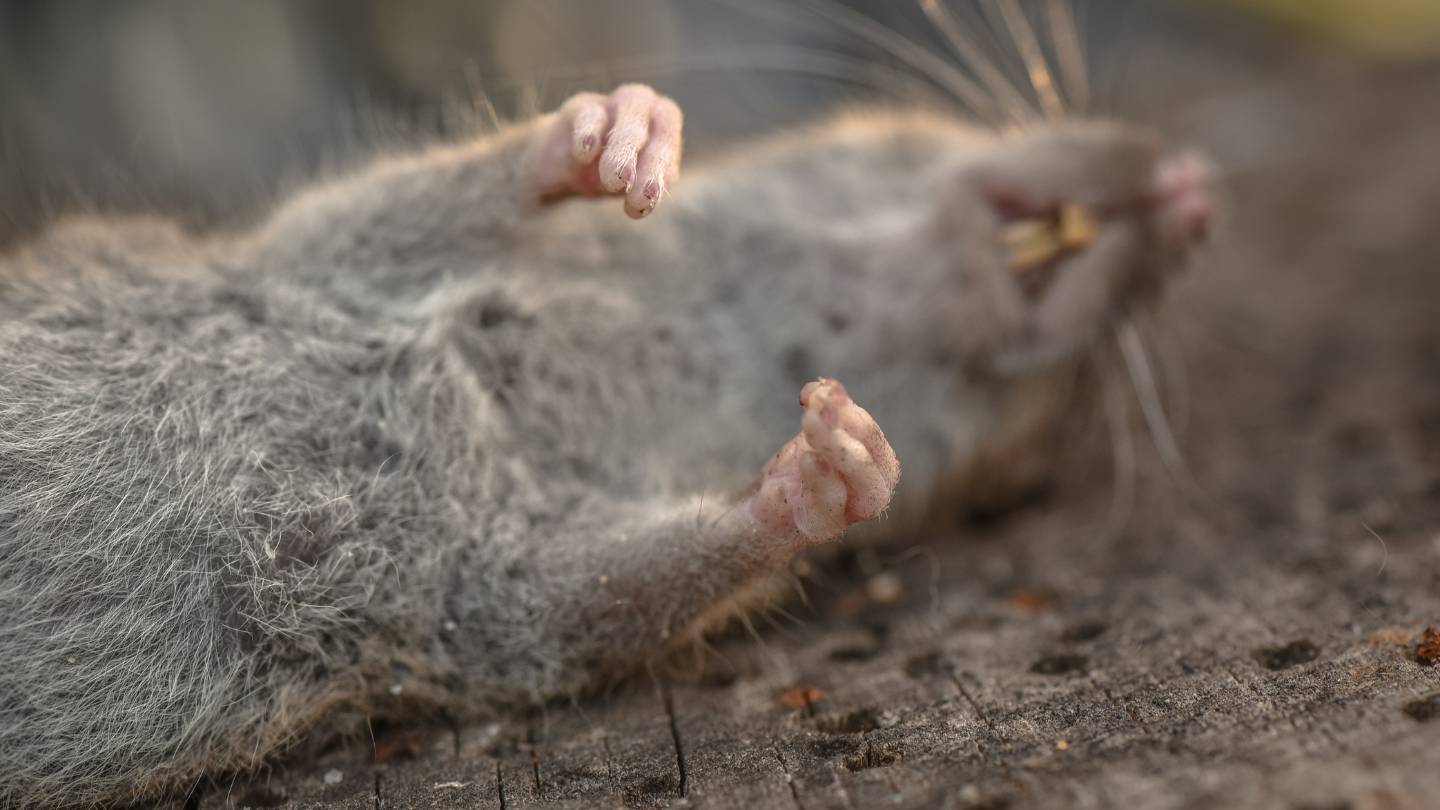
Most Necessary Things You Should Have
Gloves
It is advised to use latex or another type of non-porous gloves.
Flashlight
It is not a wired light, but one that runs on batteries and has a strong beam is required.
Plastic Bags
The ideal bags to use are large trash bags or construction bags.
Lighter/Matches
Once the animal is inside the bag, seal it.
Bucket Or Bowl
For storing towels soaked in bleach.
Rags
Rags made of cloth, paper towels, and even cat litter can be used as absorbents.
Rubber Gloves
Additionally, it is suggested for this procedure.
What Does A Dead Animal Smell Like?
Nearly all homeowners fail to notice the presence of deceased rodents. If you smell anything in your attic or, even worse, in your walls or air vents, it will likely be the putrid scent of a dead animal.
Dead rodents release a "bouquet" of poisonous gases, including pyruvic acid, methane, hydrogen sulphide, and ammonia, in addition to the foul stench of decay.
Dead rats release harmful gases and tiny chemicals into the air, making their odour dangerous to humans. The gases can enter the lungs and induce sickness because most houses do not have consistent ventilation.
A Guide To Locating The Dead Animal
Is There Any Odour You Can Identify?
A deceased animal, first and foremost, will leave a horrible smell in your house. There may be dead stuff on your walls if the odour is particularly strong. If you've never smelled the stench of a dead animal, it could be hard to describe it to someone. You might have to dig deeper into the source of the odour if you can't pin it down or get rid of it.
The animal's demise in your vents could disperse the unpleasant odour in your home. If that's the case, you might not only have trouble breathing but also notice unpleasant odours. A dead animal in your vents will likely cause poor airflow and terrible odours.
Flies Abound
Is it a fly season where you live? The presence of flies could indicate the presence of a dead animal within your walls if you cannot explain it. Determine which kind of flies these are. If you find fruit flies in your kitchen, for instance, they're likely not chasing a dead animal but rather some decaying fruit. On the other hand, blowflies are usually the ones that go after dead animals. You can tell these flies apart by:
- Adults with metal bodies
- Pale larvae
- Like houseflies, males have little hairs all over their bodies.
While flies alone won't necessarily signal the existence of a dead animal, a combination of blowflies plus a strong odour usually does. The only way to know is to locate the animal's remains before they dry out and decay. A dead animal's corpse will take longer to decompose in wet conditions.
A lifeless animal lying in a convenient location isn't always available, unfortunately. Occasionally, a squirrel may have built a home among your attic's piles of junk. A rat may have perished within your property's walls on occasion. It may take some digging to uncover the body.
Follow The Odour.
The most difficult-to-ignore trace would be your best bet. With enough sniffing, you'll find the room where the source is located. Introducing microorganisms that cause disease is a potential hazard when dead animals decay in walls.
Sniff It Out
The most telltale indicator of a deceased animal is its horrible odour. The strength and intensity of the odour will be proportional to the animal's death time. Depending on the air circulation in the house, following the scent could sometimes be deceiving. When everything else fails, remember that animals usually seek out their nesting place, water, or heat source before passing away. Make sure you look for these things.
Put Your Pets To Work
You can find a carcass with the aid of your cherished pets. A dog's acute hearing allows it to identify the sound of an intruder well before you can. The same holds for their acute sense of smell, allowing them to pinpoint a dead animal's location. Please exercise extreme caution so as not to put them in harm's way. Keep your cool and stop your pet from going after the wild animal.
Look For Stains
Is a roof leak the cause of the stain on your ceiling? Give it another thought. Stains can be left on ceilings and walls as dead animals decompose. When combined with other clues, stains can help pinpoint the exact location of an animal.
Recognize New Pests
If you find a dead animal in your home, you may likely encounter more bothersome pests. Flies, maggots, ants, and other pests will flock to decaying flesh, just as they do to spoiled food. Pay attention if you see a swarm of flies or a trail of ants; they will guide you to the dead animal.
Follow The Flies
Flies are attracted to decaying organic substances. Consequently, you may also have to cope with an infestation of flies. Wherever there is a skin break on the carcass, the flies will find it and start their brood. After a while, maggots will cover the body, which means more flies.
You may need to clear a path through a cluttered chamber to reach the dead animal. Additionally, you can take this chance to save some of the stuff to make sure this doesn't happen again.
Call A Handyman
If the carcass is wedged between the walls, you must hire a skilled handyperson. If you aren't an expert, you shouldn't try to open the wall on your own.
Procedures For Locating A Dead Animal Within Your Home
Find The Animal
It may be more challenging than it seems, especially if you live in a house full of animals. Look in the area where you have noticed droppings or smelled an odour first. There are still plenty of other spots the animal might be hiding, but this will assist in zeroing in on the general region.
It may be more challenging than it seems, especially if you live in a house full of animals. Look in the area where you have noticed droppings or smelled an odour first.
Examine The Flooring
Look for cracks or other entry points animals could use to get in. Doors, windows, plumbing, electrical outlets, and the like are common places to find this. A live trap attached to the floor adjacent to a suspected spot is a common but ineffective piece of advice seen online. People bait live traps with peanut butter and wait weeks for an animal to come running.
Not only is it inhumane, but it may lead to further animals becoming caught in other places. Instead, lay a wire mesh over the probable spot and survey the surrounding area. Put some bait in it and keep an eye on it. If the thought of animals gnawing through the wire makes you uneasy, you can always attach it to the floor or something else.
Look Up
Give the animal a way out if you see any signs of captivity, such as holes, vents, or fractures in the roof.
Look Behind Things
Finding a dead animal in your home might lead animals almost anywhere. Inspect the spaces under furniture, appliances, and dressers; if you have access to a crawl space or attic, search there.
Check Inside Things
Investigate all possible storage areas, including cupboards, closets, garbage cans, etc. The animal may be unable to escape and be difficult to spot from the outside if trapped within. Because of their weight and potentially dangerous edges, you should not attempt to move large pieces of furniture or appliances on your own.
Look In The Attic Or Crawl Space
The attic or crawl space may be grimy, but it's worth searching beneath insulation and behind pipes that animals could use to get into your home. Check her for any signs of defecation as well. Typically, they point to the location of the corpse. Please only peer inside if you are confident in your ability to do so without risking injury.
Look For Droppings
Although droppings are a strong clue as to the location of the corpse, they do not prove that the animal died at that spot. After smelling an odour or seeing an animal in your home, the next step is to search for droppings.
This could be challenging because not all animals will leave their droppings in plain sight. They are quite good at hiding or will only travel to specific areas. If you need help locating the animal's corpse after you've looked everywhere, keep searching until you do.
Suggestions And Warnings:
Suggestion
- Wearing protective gear such safety glasses, a breathing mask, and rubber gloves is essential when going animal hunting due to the potency of these toxins.
- Without enough ventilation, you should not spray chemicals inside your home.
- When handling a humane chemical or setting a trap near an animal in captivity, it is important to wear protective gear if the animal escapes or attacks. Additionally, wear them if you come into touch with droppings to shield your skin from potential infections.
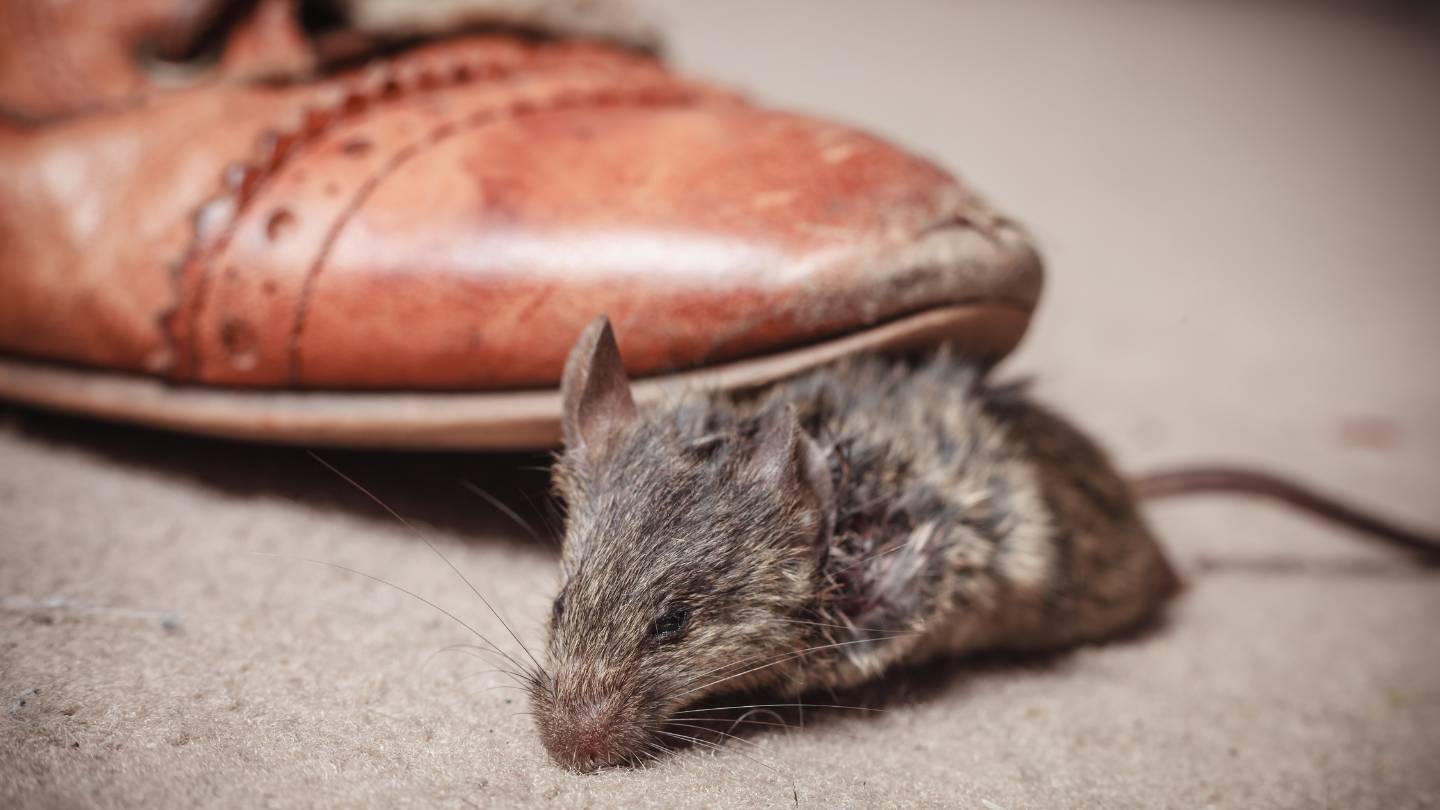
Warning
- Make sure you're wearing protective gear if you detect any odour. The smells are often overpowering and make some dizzy or even faint.
- Refrain from wasting time or energy searching your home for trapped animals if you cannot afford to; doing so is a filthy and perhaps hazardous task.
- Pets and children should not be allowed to search for deceased animals.- The animal can be in an inaccessible or otherwise difficult-to-reach spot if its location is unknown. In such a situation, it is recommended that you contact a local expert who can remove the animal at no cost to you.
- Pets and children should not be allowed to search for deceased animals.- If you have yet to learn where the animal is, it could be in a very inaccessible or difficult-to-reach spot.
- Avoid using gasoline, bleach, or any other chemical when cleaning up after an animal's death in your home. These can be toxic if inhaled and can damage your home's structure. The situation calls for hiring professional cleaners, who can be had for a reasonable price.
- It would be a mistake to think the droppings are new. Bugs or insects indicate a day-long presence.
Conclusion
Pets can help people find dead animals in their homes. They can smell things very well and can tell when someone is breaking in before people can. Animal tracks on the roof and walls can help find their exact location. New bugs, like flies, maggots, and ants, may be drawn to dead meat. Flies are drawn to dead organic matter, so making a way through a crowded room can help you find the dead animal.
If the body is stuck between walls, you should hire a skilled handyperson. To do this, you have to look for the animal's droppings, look at the floor, look up, behind things, and inside things. Because animals are so dangerous, it's important to wear safety gear when chasing them. Chemicals shouldn't be sprayed inside if there isn't enough airflow, and safety gear should be worn when working with humane chemicals or putting traps near animals that are kept as pets.
As a warning, you should wear protective gear if you smell something bad, not waste time or energy looking for animals that are stuck, not let pets or kids look for dead animals, and not use gasoline, bleach, or other chemicals to clean up after an animal has died. Since bugs or insects mean that someone has been there all day, it is important to keep looking until you find the body.
It can be hard to find a dead animal in your home, but if you take the right steps and know what to look for, you can find the animal.
Content Summary
- Identifying a dead animal in your house involves patience and certain items.
- Initially, the smell of a dead animal may not be severe, but it worsens over time.
- Use gloves or a paper towel-covered stick to handle the animal if possible.
- Dead animals in homes are often caused by getting trapped or lacking food or water.
- Sealing entry points in your home is crucial to prevent animal access.
- Necessary items include latex gloves, a battery-operated flashlight, and plastic bags.
- A bucket or bowl for bleach-soaked towels and absorbent rags is also recommended.
- Dead animals emit a putrid smell from gases like pyruvic acid and methane.
- The odour of dead animals is hazardous, potentially causing illness.
- A strong, unpleasant smell in the house typically indicates a dead animal.
- Dead animals in vents can spread odour and affect air quality.
- The presence of blowflies, especially adults with metallic bodies, suggests a dead animal.
- Finding a dead animal may require searching in hidden or cluttered areas.
- The strength of the odour can help locate the dead animal.
- Pets, especially dogs, can assist in locating dead animals due to their keen senses.
- Stains on walls or ceilings might indicate a decomposing animal.
- New pests like flies or ants in the house can lead to a dead animal.
- Flies, especially where maggots are present, often indicate a nearby carcass.
- Decluttering spaces can help in the search for a dead animal.
- In hard-to-reach areas, professional assistance might be necessary.
- Start the search in areas with odour or droppings.
- Examine flooring for entry points and signs of animal presence.
- Check the roof and vents for trapped animals.
- Inspect under and behind furniture and appliances.
- Investigate storage areas and enclosed spaces for trapped animals.
- The attic or crawl space may hide the animal, so check under insulation and pipes.
- Look for droppings, as they can indicate the vicinity of the dead animal.
- Protective gear like safety glasses, a mask, and gloves are crucial for safety.
- Avoid spraying chemicals in poorly ventilated areas.
- Protective gear is necessary when setting traps or handling animals and droppings.
- If a dead animal odour is detected, wear protective gear to avoid health risks.
- Avoid extensive searches if you're unprepared for dirty and hazardous conditions.
- Keep pets and children away from searching for dead animals.
- If the animal's location is unknown, it's best to contact a local expert for removal.
- Avoid using harsh chemicals like gasoline or bleach for cleanup.
- Professional cleaners are recommended for safe and effective cleaning after animal removal.
- Do not assume droppings are fresh; insects indicate they've been there a while.
- The deterioration of a dead animal's condition increases the urgency of removal.
- Using unsuitable tools or methods can exacerbate the situation.
- The location of a dead animal can sometimes be surprising or unexpected.
- An animal's death can attract other wildlife, complicating the situation.
- Regular inspection of potential entry points helps in preventing future incidents.
- Understanding animal behaviour and habitats aids in quicker location.
- The process of locating and removing a dead animal requires a methodical approach.
- Awareness of local wildlife helps in identifying potential intruders.
- Involving professional wildlife removers ensures safe and ethical handling.
- The decomposing process varies based on the size of the animal and environmental conditions.
- Certain seasons or weather conditions can increase the likelihood of animal intrusions.
- Regular home maintenance reduces the chances of animals getting trapped.
- After removal, thorough cleaning and disinfecting are crucial to eliminate health risks.
Frequently Asked Questions
Yes, pest control or wildlife removal services specialise in locating and safely removing dead animals, particularly in hard-to-reach areas.
Regularly inspect your property for potential entry points and seal them. Keep food sources properly stored and maintain a clean environment to deter pests.
Yes, the scent can attract insects and other scavengers. Dead animals can also carry diseases, so prompt removal is essential.
In such cases, it might be concealed or within walls. Consider seeking professional help to use specialised equipment for detection.
Clean affected areas with vinegar and water, use baking soda to absorb odour and consider using commercial odour eliminators or professional cleaning services.

